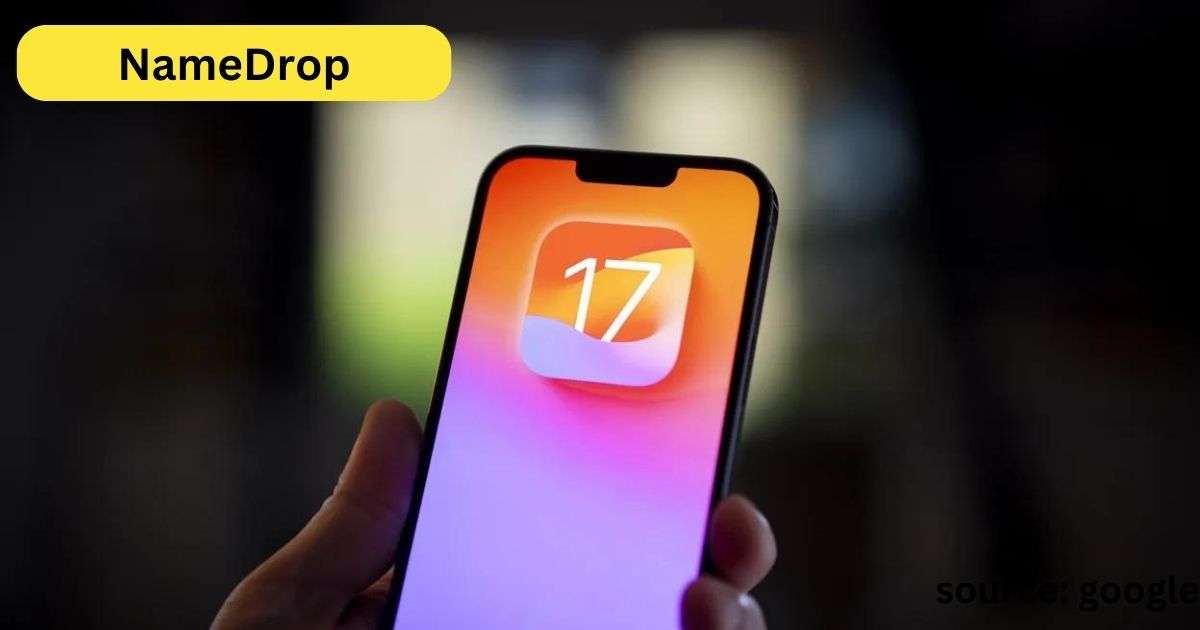NameDrop: In the ever-evolving world of technology, iOS 17 updates bring about excitement and curiosity. The latest iOS 17 introduces a fascinating feature called NameDrop. However, this convenience is not without controversy. Police departments nationwide are sounding alarms about potential safety risks associated with this feature. In this article, we’ll delve into what NameDrop is, how to use it, and the concerns raised by law enforcement.
What is NameDrop?
NameDrop is a feature introduced in iOS 17.1 and watchOS 10.1, exclusively for iPhone and Apple Watch users. It simplifies the exchange of contact information between devices, offering two options: “receive only” and “share.” Users can either take someone’s contact details without reciprocating or engage in a mutual information exchange.
How to Use the New iPhone Feature
Understanding NameDrop’s functionality is crucial for users. Follow these simple steps:
1. Bring the devices within a few centimeters of each other.
2. Wait for a vibration and glow, indicating a successful connection.
3. Choose between “receive only” or “share” when prompted.
4. Non-response cancels the information exchange.
5. If devices move apart during the process, the action is canceled.
Apple emphasizes that the device must be unlocked to share any information. Users can customize shared information in the “My Card” settings in the Contacts app.
What Police Are Saying About NameDrop
Law enforcement agencies in various states are cautioning Apple users about potential safety risks. Police warn that NameDrop can function without user knowledge, advising against letting strangers hold your phone. In South Carolina, the Greenville County Sheriff’s Department raises awareness, especially among vulnerable individuals who may overlook or misunderstand the feature.
Should You Be Worried?
Addressing the concerns, an Apple spokesperson reassures users that NameDrop is designed for selective information exchange, allowing users to choose specific contacts. Notably, if users do not engage in the “share” or “receive only” options, their information remains private. Apple asserts that no contact information is automatically shared when devices are brought together.
If discomfort persists, users can disable NameDrop easily:
- Navigate to Settings.
- Under General, select AirDrop.
- Find the “Bringing Devices Together” option and toggle it off.
Rufus Mathew, a Paychex software engineer with a cyber security background, suggests toggling NameDrop off after leaving events to avoid unintentional sharing of location and details.
Conclusion
This new feature of iOS 17 has become a new security concern. But Apple company spokesperson said that customer privacy is a priority for us. You shouldn’t worry about it.
FAQs
1. Is NameDrop automatically enabled in iOS 17?
No, users need to enable NameDrop manually in the settings.
2. Can NameDrop be used with non-Apple devices?
No, NameDrop is exclusive to iPhone and Apple Watch users.
3. Are there any age restrictions for using NameDrop?
No specific age restrictions exist, but parents are advised to supervise children’s device settings.
4. Can NameDrop be disabled temporarily?
Yes, users can toggle off NameDrop in settings when not needed.
5. Does NameDrop share location information automatically?
No, location information is only shared if users engage in the sharing option.
Also Read: 7 AI Tools That Will Make You Rich
